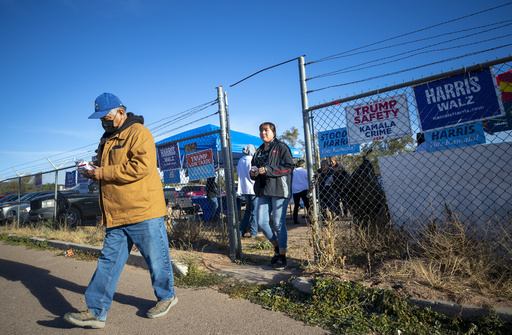WASHINGTON — On Saturday night, President-elect Donald Trump was officially announced as the victor in Arizona, following updates of vote counts from Maricopa County and other regions that solidified his lead, making it impossible for Vice President Kamala Harris to catch up.
As the announcement was made at 9:21 p.m. ET, Trump was ahead of Harris with 52.6% to 46.4%, a difference of approximately 185,000 votes. To have any chance of reeling in Trump, Harris would have needed to secure nearly 70% of the remaining 443,000 uncounted votes, a daunting challenge that became increasingly difficult as more ballots were tallied.
This victory means that Trump has completed a sweep of all seven critical battleground states, accumulating a total of 312 electoral votes, in contrast to Harris’s 226. A total of 270 electoral votes is required to claim the presidency.
In the previous 2020 election, Joe Biden narrowly won Arizona against Trump, achieving a scoreboard in Maricopa County with 50% of the votes to Trump’s 48%. In the current election, Trump was leading Harris 52% to 47%. The Associated Press typically calls a winner only when it is clear that the trailing candidate can no longer close the gap to win.
The candidates in this race included President Harris (D), Donald Trump (R), Chase Oliver (Libertarian), and Jill Stein (Green). The official announced winner is Donald Trump. Arizona’s polls closed at 9 p.m. ET on Election Day, with voting results being released only after all precincts have reported or one hour following poll closure, which typically happens by 10 p.m. ET.
Both candidates aggressively campaigned across Arizona, a key border state with immigration as a significant topic. Trump focused heavily on enforcing stricter immigration policies, advocating for the deportation of individuals without legal status, whereas Harris advocated for pathways to citizenship alongside enhanced border security.
Independent voters form the largest voting group in Arizona, followed by Republicans and then Democrats, who have increasingly been successful in Senate elections and securing the governorship since 2018. Joe Biden became only the second Democrat to win the state in over seven decades.
Both candidates targeted Maricopa County, known for its sizeable population, including cities like Phoenix, Mesa, and Tempe. Trump won this county by a margin of 3 points in 2016, while Biden narrowly took it by 2 points in 2020. Arizona has gained a reputation as an early voting state, with over 75% of votes cast in advance during 2016; this number rose to nearly 90% in the following election.
The rationale behind the AP’s announcement was based on the historical voting patterns in statewide elections over the past twelve years, where Democrats consistently won in specific counties, including Apache, Coconino, Pima, and Santa Cruz. Although Harris had substantial leads in these areas, she did not perform as well as Biden had in 2020.
Harris struggled in Maricopa County, a crucial area for Democrats, which Biden had won in the last election. While there was a brief period on election night when she led in the overall vote count, Trump has maintained a steady lead since then.
Upon examining Arizona’s voting history and demographic factors at the county level, it became evident that Harris had no feasible way to bridge the gap. Even potential vote shifts favoring her would not be adequate to overturn Trump’s lead.


